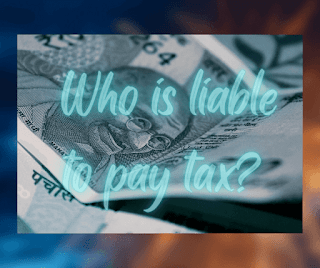TABLE OF CONTENT
1, Direct tax
2. central tax
3. Tax on total income
4.Progressive tax
5.Health and education cess
6.Tax burden
7. Administration
HISTORY OF INCOME TAX IN INDIA
In India, this tax was introduced for the first tie in 1860, by Sir James Wilson in order to meet the losses sustained by the government on account of the military mutiny of 1857. In 1918, a new Income tax act .This Act was passed in 1922 .This act remained in force up to the assessment year 1961- 62 with numerous amendments. The Income tax act of 1922 had become very complicated on account of innumerable amendments .The governments of India, thereof referred it to the law commission submitted its report in September 1958 ,but in the meantime, the government of India had appointed the direct taxes administration inquiry committee to suggest measures to minimize inconvenient to assesses and to prevent evasion of tax. The law commission submitted its report in September 1958 ,but in the meantime, the government of India has appointed the direct taxes administration enquirer committee to suggest measures its report in 1959 .In consultation with the ministry of law finally the income tax act,1961 was passed.
The income tax act 1961 has been brought into force with effect from 1
st April 1962 .It applies to the whole of India and Sikkim( including Jammu and
Kashmir).since 1962 several amendments of far reaching nature have been made in
the income tax act by the finance act ,every year. Besides this, amended ace
also been made various amendments act 1987 ,Direct Taxes Law acts 1988 ,direct
tax (second amendment) act, 1991 .The amendments in the finance acts, 1992 and
1993 are mostly based on the recommendation of all committee report .AS a
matter of act, the income tax act 1961 ,which came into force on 1st
April ,1962 has been amended and re –amended widely .It has ,therefore ,become
very complicated both for the
administering authorities and the
tax payers.
Who is liable to pay tax?
Every person, whose taxable income for
the previous financial year exceeds the minimum taxable limit is liable to pay
income tax during the current financial year on the income of the previous financial year at the rates
applicable during the current financial year.
ALSO READ
Our new article........
CHARACTERISTICS OF INCOME TAX
1. DIRECT TAX
Income is a direct tax. Direct tax means such tax which is paid by a
person who bears the tax burden.
2. Central tax
Income tax is imposed and recovered by the
central government.
3. Tax on TOTAL INCOME
Tax income is calculated on total income .Total income is also called
taxable income .Taxable income is calculated according to the provision of the
income tax.
4. PROGRESSIVE TAX RATES.
Tax is not imposed at the same rate on the same rate on the total income of an individual,HUF ,AOP or BOI .Tax relates increases with an income .Minimum tax rate is 5% and maximum rate is 30% .Firm incomes are taxed at the rate of 30% and companies incomes are taxed at the rates of 15% or 22% or 30%.
5. HEALTH AND EDUCATION CESS.
All
assesses are liable to pay health and education cess @4% on the total amount of
income tax including surcharges.
6. TAX BURDEN
Tax is
imposed at a progressive rate on the income of individuals and HUF therefore
rich person bear more tax burden.
7. ADMINISTRATION


